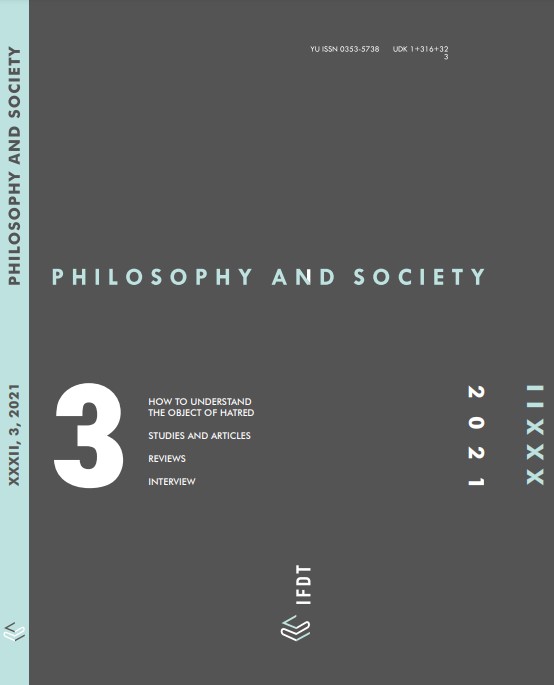HEIDEGGER’S AESTHETICS. THE PHILOSOPHY OF FINITE HUMAN FREEDOM AND BASIC MOODS AND EMOTIONS
HEIDEGGER’S AESTHETICS. THE PHILOSOPHY OF FINITE HUMAN FREEDOM AND BASIC MOODS AND EMOTIONS
Author(s): Nebojša GruborSubject(s): Aesthetics, Existentialism
Published by: Institut za filozofiju i društvenu teoriju
Keywords: aesthetics; art; freedom; Heidegger; sublime; mood; strife; truth
Summary/Abstract: The first part of the text poses the question whether for Heidegger’s aesthetically relevant thought it is better to use older terms, such as “Heidegger’s Doctrine of Art” or “Heidegger’s Philosophy of Art”, or a more recent term “Heidegger aesthetics”? Does the term “Heidegger’s aesthetics” represent an “oxymoron” contrary to the intentions of Heidegger’s own philosophy, or does it signify a relevant aesthetic conception that has its own place in contemporary philosophical aesthetics? In order to answer these questions, the text considers Heidegger’s understanding of aesthetics as a philosophical discipline and also the problems arising in connection with this designation. It argues that Heidegger’s concept of “overcoming aesthetics” represents the (self) interpretation of his own philosophy of art developed in the essay The Origin of the Work of Art. The second part of the text follows the thesis that the Heidegger’s aesthetics contains the definitions of art and work of art, based on Heidegger’s analyses of freedom, basic moods, and emotions. This part of text follows a broader thesis, in which Heidegger’s philosophy as a whole can be understood as the phenomenology of freedom. Also, it discusses a special thesis that the concept of strife (Streit) of Earth and world in The Origin of the Work of Art should be understood only on the background of the primordial struggle between concealment and unconcealment in the truth as the unconcealedness of beings. Further, the concept of strife is linked on a deeper level with the determination of finite human freedom and basic human moods. In light of that, Heidegger’s aesthetics is not only the heteronomous aesthetics of the work of art, but also the (relatively) autonomous aesthetics of aesthetic experience articulated with respect to finite human freedom. The conclusion is that Heidegger’s aesthetics of truth understood as the philosophy of freedom, basic moods, and emotions, according to their inner intentions, is closer to the tradition of the aesthetics of sublime than the aesthetics of the beautiful.
Journal: Filozofija i društvo
- Issue Year: 32/2021
- Issue No: 3
- Page Range: 418-427
- Page Count: 10
- Language: English

